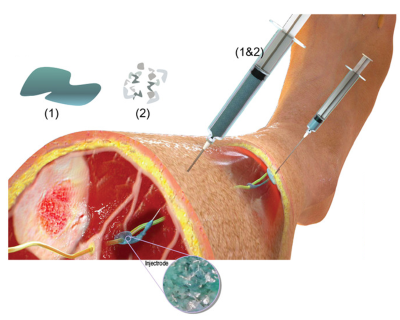Don’t be surprised if your doctor has some changes in store for your routine blood tests. Some tests may be added or subtracted from your lab order this year, or your doctor may tell you to interpret the results a little differently. Here are several tests to discuss with your doctor.
A vitamin D test
Vitamin D is important for many aspects of health, including calcium absorption, bone health, reducing inflammation, and immune function. Doctors debate how much D we need, and most guidelines say we don’t have enough evidence to support routine screening in healthy people. However, many doctors still order the tests regularly.
The test measures a type of vitamin D called 25-hydroxyvitamin-D. Until recently, levels considered healthy or “sufficient” varied widely, from 12.5 nanograms per milliliter (ng/ml) to 60 ng/ml. Several guidelines recommend levels higher than 20 or 30 ng/ml.
What’s new: The Endocrine Society, one of the leading organizations leading vitamin D practices, published new vitamin D guidelines in the August 2024 issue of The Journal of Clinical Endocrinology and Metabolism.
In a major change, the guidelines abandoned the concepts of “sufficiency” and “deficiency” of vitamin D and strongly recommended against routine vitamin D testing. The exception is for people with specific conditions such as chronic kidney disease or difficulty absorbing vitamin D (such as Crohn’s disease). The recommendations are based on the lack of evidence on the benefits of routine testing.
The Endocrine Society guidelines also say that most healthy adults do not need vitamin D supplements. Exceptions include pregnant women, people with prediabetes, and people 75 years and older. These groups may benefit from low-dose vitamin D supplementation (about 1,000 IU per day), but should also try to obtain the vitamin through fortified foods or incidental sun exposure.
What you should do: Talk to your doctor about the new guidelines. If you have a condition that causes vitamin D deficiency, belong to one of the groups above, or take a medication that can lower vitamin D levels, you may need regular screening.
“Otherwise, you’re unlikely to need routine testing or taking a supplement. Most of us get enough D from foods like fish, dairy products, and fortified cereals. And the body can make vitamin D in the skin with just 10 to 15 minutes of sun exposure a few times a week,” says Dr. JoAnn Manson, a leading vitamin D researcher at Harvard and chief of the Division of Preventive Medicine at Harvard-affiliated Brigham and Women’s Hospital. “If you’re concerned you’re not getting enough vitamin D, it’s safe to supplement with 1,000 to 2,000 IU per day. But our large randomized trials of vitamin D suggest that most people already get the vitamin D they need and supplements have limited benefits.”
Blood test to detect heart disease.
You’re probably familiar with a routine cholesterol test that measures various fats in the blood (such as “bad” LDL cholesterol) that can increase your risk of heart disease and stroke. This year, your doctor may also order two additional blood tests.
One measures lipoprotein(a) or Lp(a). If Lp(a) levels are very high, your risk of heart attack, stroke, and some heart valve problems may increase, even if standard cholesterol levels are normal. High Lp(a) is inherited, meaning it only needs to be measured once, as the National Lipid Association currently recommends. The test is covered by insurance, but few people perform it, mainly because until recently we did not have treatments to lower Lp(a).
The other test measures C-reactive protein (CRP), a substance produced by the liver when there is inflammation in the body. The results of the test, called a high-sensitivity C-reactive protein (hsCRP) test, can indicate levels of inflammation, as well as risk of heart attack or stroke. The test is generally covered by Medicare. It is not always routinely requested, but is supported by the American Heart Association to help predict heart attack risk.
What’s new: A Harvard study published on August 31, 2024 in The New England Journal of Medicine suggested that LDL, hsCRP, and Lp(a) testing (taken together) could predict strokes and heart problems decades in advance.
About 28,000 women participated in the research (mean age 54 years), followed for up to 30 years, whose LDL, CRP and Lp(a) levels were measured at the beginning of the study. All three biomarkers were linked to the risk of heart attack and stroke, especially CRP. The risks increased even further for people who had high levels in two or even three of the different tests.
What you should do: “Everyone, regardless of gender, should measure all three together, preferably between ages 30 and 40, as prevention needs to start early,” says Dr. Paul Ridker, the study’s lead author and director of the Center for Cardiovascular Disease Prevention at Harvard-affiliated Brigham and Women’s Hospital.
If your doctor has not yet ordered these tests, ask him or her about them. “Because some of this information is new to primary care physicians, many patients bring research work to their office visits,” says Dr. Ridker. Beyond lifestyle changes, your doctor may recommend specific treatments based on your test results.
A complete blood count (CBC)
A CBC tests for blood components that indicate whether you have various conditions, such as anemia, infection, and blood cancers.
The routine test measures the number and characteristics of red blood cells, five types of white blood cells, platelets, and hemoglobin (a protein in red blood cells that carries oxygen) and calculates values such as hematocrit (the percentage of blood made up of red blood cells).
The results of each measurement are compared to a standardized “normal” range. For example, a red blood cell count between 4.0 and 5.4 million cells per microliter (mcL) is considered normal for women, and 4.5 to 6.1 million/mcL is normal for men. Ranges may vary slightly by lab. A result outside the normal range is considered abnormal.
What’s new: A Harvard study published online on December 11, 2024 by Nature suggests that it might be more useful to compare your latest CBC results with your previous figures, rather than standard benchmarks.
The scientists evaluated the complete blood counts of more than 12,000 healthy people who underwent five tests over 20 years. Participants’ results didn’t change much, regardless of where the numbers fell within the normal range. Each person had a unique combination of “set points.”
Researchers say changes to these set points could help doctors detect health problems earlier, which is important for conditions like diabetes or heart disease. “The normal ranges are too wide and should be narrowed for each person. That range might be lower for some people and higher for others,” says Dr. John Higgins, the study’s lead author and a pathologist at Harvard-affiliated Massachusetts General Hospital.
Another finding from the study: Participants whose set points fell at the low or high end of a measurement’s normal range had higher rates of disease diagnosis and death within 10 years, compared to people whose set points remained in the middle of the normal range.
What you should do: Keep an eye on your CBC results, know what’s normal for you, and talk to your doctor if you notice changes. Bring this article if you think it will be useful to you. “Set points give you a personalized reference point to detect slight deviations from your steady state and help us interpret the results of other diagnostic tests to get a more accurate picture of health,” says Dr. Higgins.
Image: © Tek Image/Getty Images



